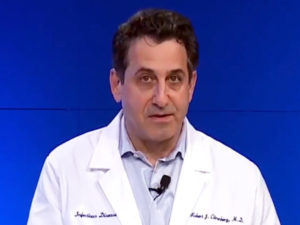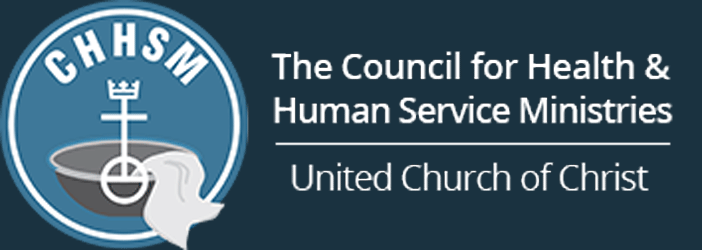An End to the Pandemic: Are We There Yet?

Dr. Robert Citronberg (from Advocate Aurora video)
By Dr. Robert Citronberg, Medical Director for Infectious Diseases, Advocate Aurora Health
Unfortunately, we are not even close.
One of the more common questions I receive is “when will this be over?” While I wish I could say “really soon,” the truth is that we are nowhere near the end of this pandemic. We are probably actually only ~ 5-25 percent down the road.
Let’s start with seroprevalence. This is basically observing what percentage of the population has already had COVID-19. We use the antibody test as a guide for this. As of today, 3.2 million Americans have tested positive for COVID-19, or 1 percent of the population. We know that many more people have had the disease than have been tested for it (although that gap is closing with expanded testing). Let’s assume that 10 times more people have had it than have tested positive. That means that 10 percent of the population has already had COVID-19, which leaves 90 percent of the population susceptible. Seroprevalence studies done around the country have consistently shown that between 5 and 10 percent of the population has already been infected, so the above estimates are pretty close. Therefore, the idea that most people have already had it (which is quite popular on social media) just isn’t true.
This number is very important in terms of the prospects of developing herd immunity, which occurs when a substantial percentage of the population has already had the disease. The minimum percentage needed for herd immunity is ~70 percent, but 80-90 percent is much better. The two major ways to achieve herd immunity are natural immunity (having the disease) and vaccination. While an effective vaccine may be available by early next year (at the earliest), recent surveys have suggested that as many as 30 percent of the population will not take a COVID-19 vaccine. Some of those people won’t take any vaccines, others are reluctant to take a vaccine without a proven safety record. So even if an effective vaccine becomes available, if a significant proportion of the population won’t take it then that will delay the occurrence of herd immunity even more.
Another popular misconception that is important to clarify is the mortality rate. When COVID-19 first hit, the early projections for mortality rate were 5-10 percent. It is now clear that the mortality rate is much lower, probably on the order of 0.5 percent (one in 200 people die from the disease). While that rate seems low, which it is compared to SARS, MERS or Ebola virus, it is actually a snake in the grass.
It is estimated that between 40 and 70 percent of the U.S. population will become infected with COVID-19 before the pandemic is over. That figure is entirely believable since no one in the world had any innate immunity to the virus before the pandemic. To make the math easy, let’s assume 50 percent of the U.S. population becomes infected, or ~160 million people. At a mortality rate of 0.5%, that translates to 800,000 deaths. As of today, 135,000 deaths have been reported in the US. By comparison, seasonal influenza usually affects ~30 million Americans and causes ~30,000 deaths, for a mortality rate of 0.1%. You can see that in just six months, there have been 4.5 time more deaths from COVID-19 compared to a full season of influenza. Paradoxically, viruses with lower mortality rates can actually kill more people because there is a much better chance for spread throughout the population.
Is it all doom and gloom? Gloom yes, doom no. Short of herd immunity (natural immunity + vaccine), what else can we do to slow the spread? This goes back to the simple mechanics of how the virus is spread. By far the most common route of transmission is droplet. That means the infected droplets that come out of your mouth and nose travel ~6 feet before falling to the ground. Despite some recent evidence that the droplets can travel farther than 6 feet depending on the ventilation, the 6-feet safety radius remains relevant and practical. Contact transmission occurs when you infect yourself by touching your face with contaminated hands. Keeping your hands and surfaces disinfected greatly reduces your chances of getting the virus that way. There has also been recent information that the virus can be transmitted by the airborne route, that is the virus may linger in the air even after the person who expelled it is gone. While this may occur in selected situations, it is believed to be an uncommon mode of transmission. That is why social distancing and masking remain at the forefront of our protection against COVID-19.
Masking works incredibly well primarily by protecting others from us in case we are infected. Face coverings (including cloth and surgical masks) are highly effective at blocking infected droplets from exiting the mouth or nose. A great scientific study that demonstrates this principle can be found at https://doi.org/10.1063/5.0016018.
Even if there are concerns about droplets traveling farther than 6 feet or airborne spread of the virus, wearing a mask is extremely effective in preventing both. There is now additional scientific evidence that wearing a mask also provides a level of protection to the wearer. There is no credible scientific evidence suggesting that masks are harmful or in any way impede breathing. Therefore, universal masking is a win-win for the prevention of COVID-19 infection. Both sickness and mortality can be greatly impacted by this simple intervention.
A friend recently explained to me the three reasons why they wear a mask in public, and it’s worth sharing:
- Humility – I don’t know if I have COVID since we know people can spread the disease before having symptoms;
- Kindness – I don’t know if the person I am near has an elderly parent or a child battling cancer; and
- Community – I want my community to thrive, businesses to stay open, employees to stay healthy.
Although the road is long, it can still be navigated.
Join Our Mailing LIst
"*" indicates required fields
